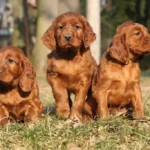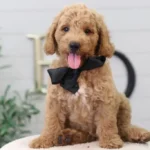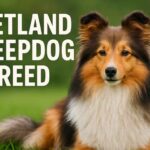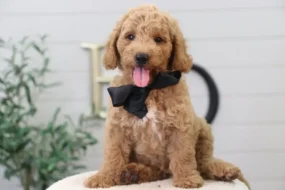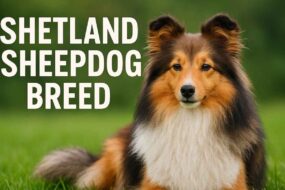
Ireland’s contribution to canine history is both rich and distinctive. The country has produced breeds admired for their intelligence, loyalty, and adaptability. Many of these dogs have ancient roots, developed for hunting, herding, guarding, or companionship. Each breed carries a reflection of Ireland’s landscape, traditions, and rural life.
Below is a comprehensive look at the most recognized Irish dog breeds, their origins, traits, and the roles they continue to play today.
1. Irish Setter
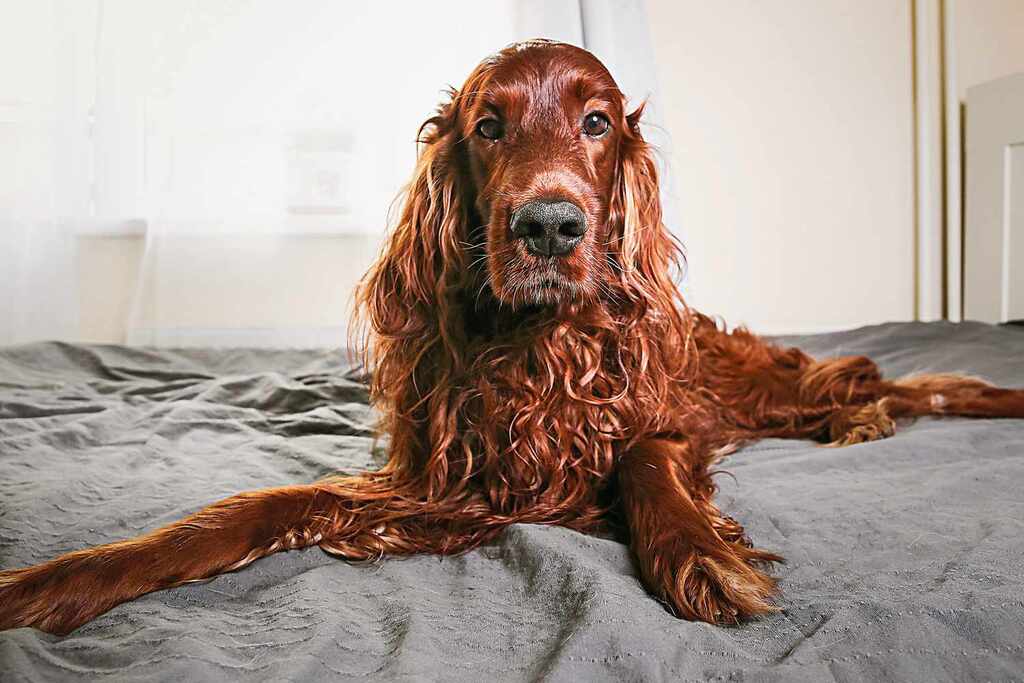
The Irish Setter is among the most iconic dogs associated with Ireland. Recognized for its striking deep red coat, it became a symbol of grace and energy. The breed emerged in the 18th century, developed from crosses between English Setters, Spaniels, and Pointers to create a dog capable of locating game birds with precision.
Its beauty is matched by its enthusiasm for outdoor activity. Known for boundless stamina, the Irish Setter thrives in environments where it can run freely. The breed’s elegant movement and keen sense of smell made it invaluable for hunters.
Temperamentally, Irish Setters are affectionate, playful, and social. They form strong bonds with families and adapt well to active households. They are intelligent but can be independent, requiring patient training. Grooming the long, flowing coat is a commitment, but it adds to the breed’s elegance.
Today, the Irish Setter remains a popular companion and show dog. Though its hunting role has declined, its joyful personality continues to win admiration worldwide.
2. Irish Red and White Setter
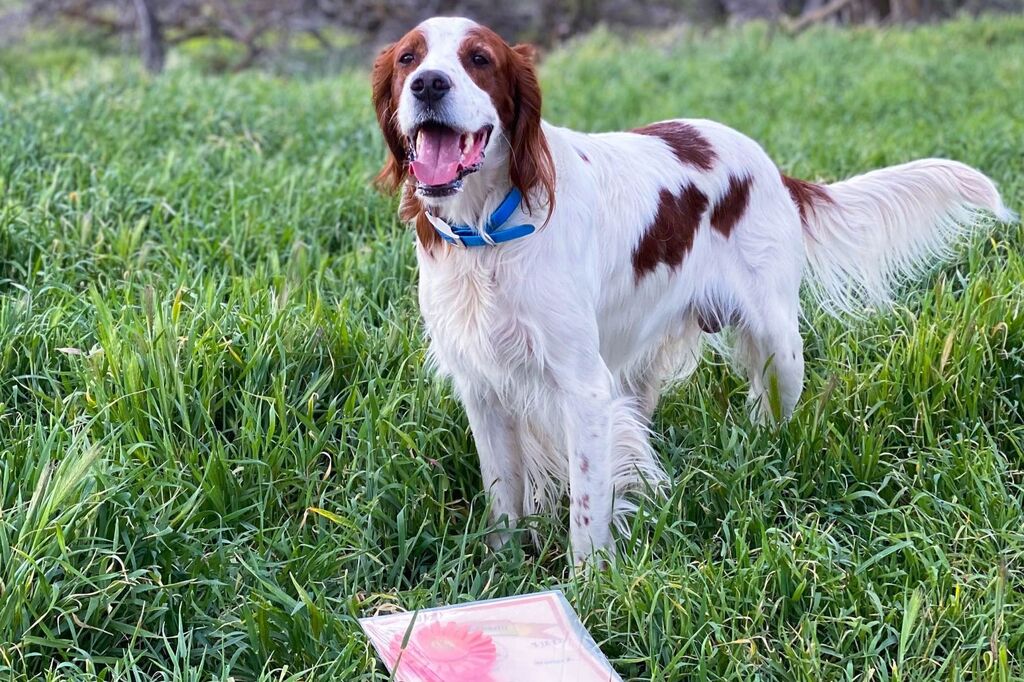
The Irish Red and White Setter is the ancestor of the modern Irish Setter. Once common throughout Ireland, this breed almost disappeared in the 19th century as the solid red variety gained popularity. Its revival in the 20th century was driven by breeders committed to preserving Ireland’s sporting heritage.
Distinguished by a white base coat with rich red patches, the Red and White Setter is athletic, intelligent, and reliable in the field. Hunters value its endurance and keen scenting skills. Compared with the all-red Setter, it tends to mature slightly faster and may be more focused during training.
This breed’s temperament reflects steadiness and loyalty. It is affectionate toward its owners and cooperative with other dogs. Regular exercise is essential for maintaining mental and physical health.
The Irish Red and White Setter holds special significance as a living link to Ireland’s sporting past. Recognized by kennel clubs across the world, it remains a symbol of resilience and tradition.
3. Irish Wolfhound
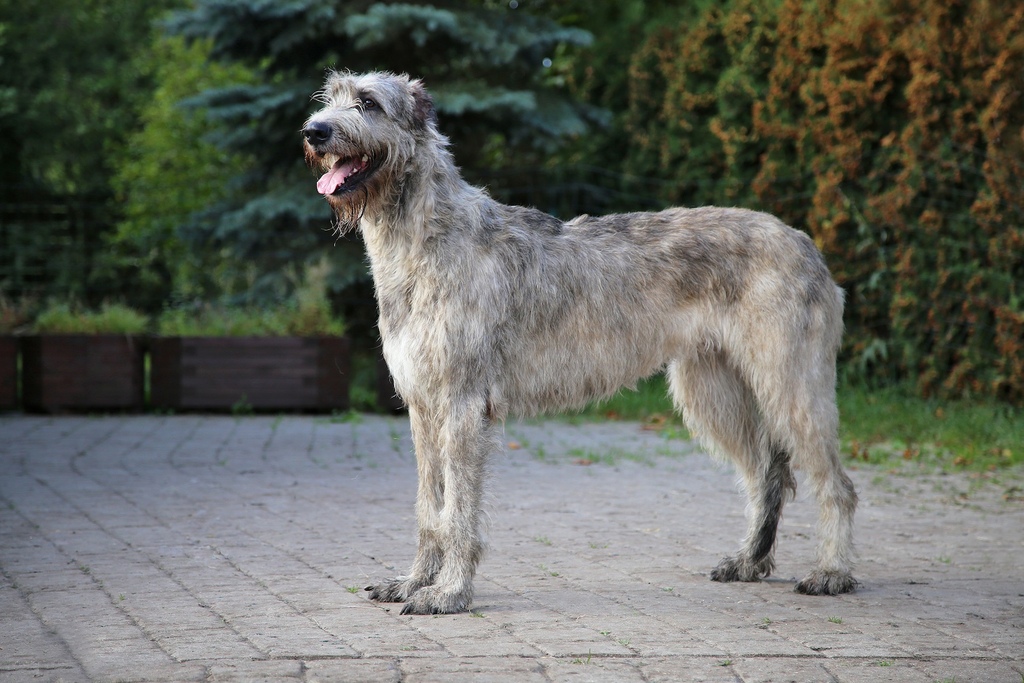
Few breeds inspire awe like the Irish Wolfhound. Standing as the tallest dog breed globally, it embodies strength and dignity. The breed’s history stretches back over two thousand years, with references found in ancient Irish literature describing massive hounds used in warfare and for hunting wolves and elk.
These dogs were once prized by chieftains and nobles, often given as diplomatic gifts. Their imposing stature and calm temperament made them both guardians and companions.
Despite their size, Irish Wolfhounds are gentle and patient. They are known for their kind nature, particularly toward children. Their quiet demeanor and loyalty make them affectionate family dogs. However, their immense frame requires space and moderate daily exercise.
Health and lifespan remain challenges for the breed, as large dogs are prone to heart and bone conditions. Responsible breeding and proper nutrition are key to maintaining their well-being.
The Irish Wolfhound’s enduring image captures Ireland’s ancient spirit — powerful, noble, and deeply loyal.
4. Irish Terrier
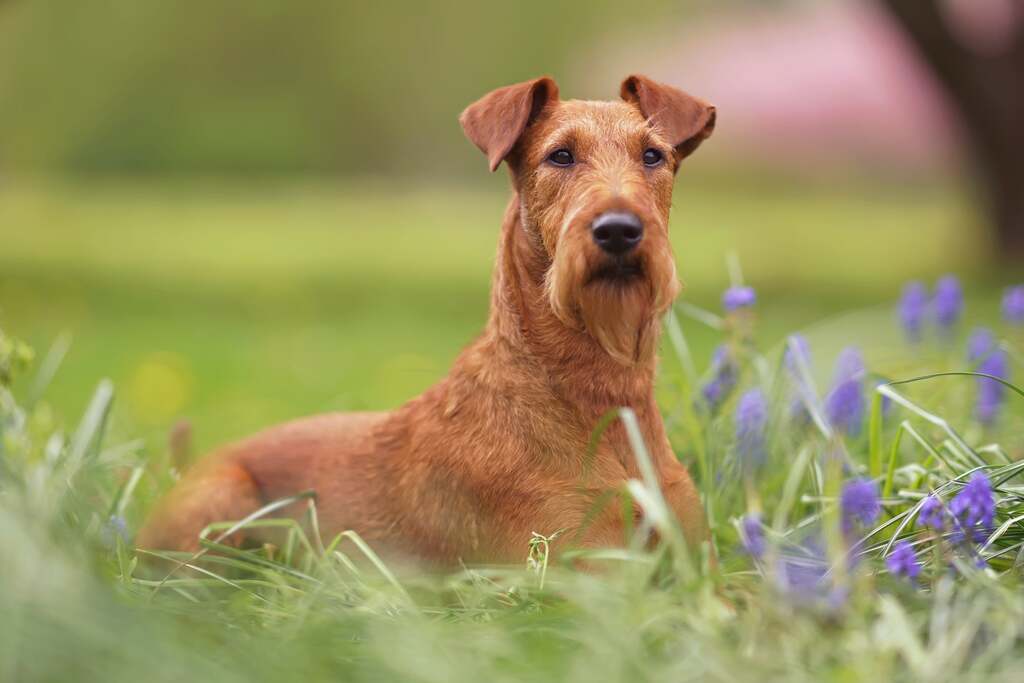
The Irish Terrier stands out with its fiery red coat and lively expression. It is believed to be one of the oldest terrier breeds, originally bred for guarding farms, hunting vermin, and serving as an all-purpose working dog.
Compact yet strong, the Irish Terrier combines courage with intelligence. Its weather-resistant coat allows it to handle the varied Irish climate with ease. The breed is full of personality — brave, loyal, and at times headstrong. It thrives on companionship and activity.
In temperament, it shows affection toward its family but can be assertive around other dogs. Early training and socialization are important. Despite its independent streak, it is deeply devoted to its human circle.
During World War I, the Irish Terrier served as a messenger and sentinel, admired for its bravery under fire. This legacy of courage remains a defining trait of the breed.
The Irish Terrier continues to attract those who appreciate a spirited, loyal, and intelligent companion with a strong character.
5. Kerry Blue Terrier
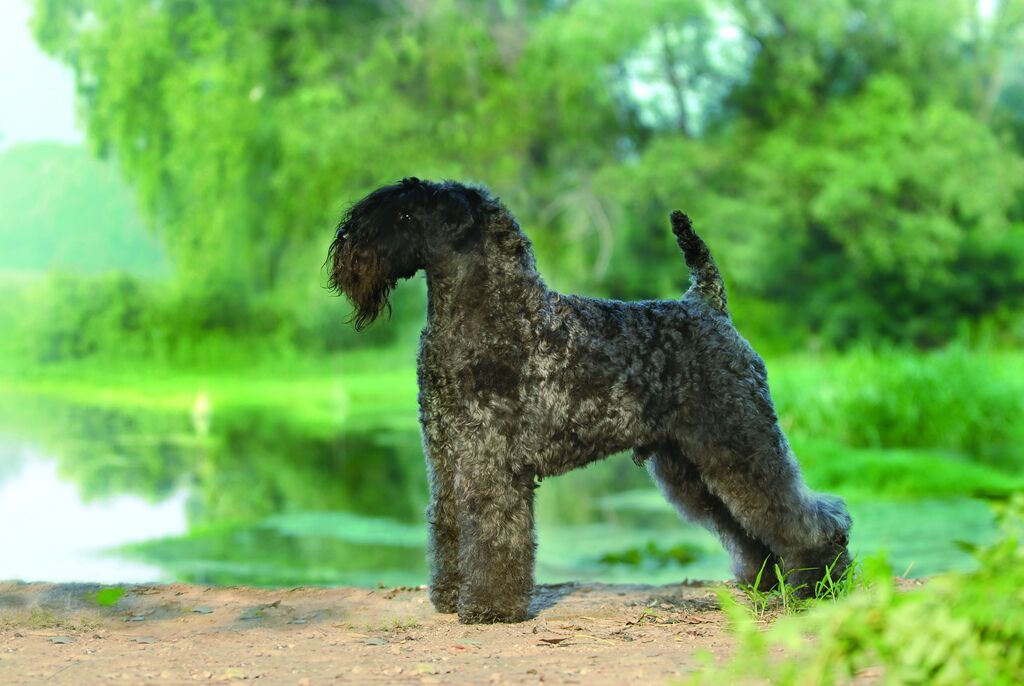
The Kerry Blue Terrier, named after County Kerry, is instantly recognizable by its soft, blue-gray coat and distinctive beard. Originally bred for hunting small game and controlling vermin, it later found success as a herding and guard dog.
The breed’s coat, born black and gradually turning blue-gray as it matures, is one of its most striking features. The texture is soft and dense, requiring regular grooming and trimming.
Energetic and alert, the Kerry Blue Terrier is known for its determination and confidence. It bonds closely with its family and enjoys mental challenges. While affectionate at home, it can be assertive toward other dogs, reflecting its working background.
This terrier’s versatility has long been admired. It has served as a hunter, herder, and show dog. In temperament and skill, it reflects the adaptability associated with Irish working breeds.
The Kerry Blue Terrier remains a proud representative of Irish breeding, admired both for its appearance and its lively intelligence.
6. Soft-Coated Wheaten Terrier
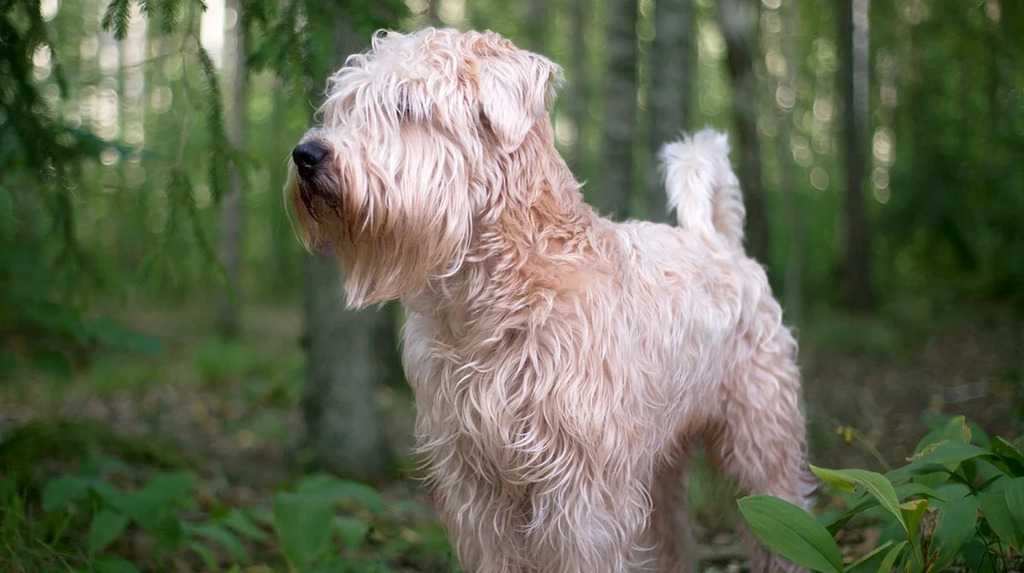
The Soft-Coated Wheaten Terrier is a charming breed that captures the warmth of Irish rural life. Its history spans more than two hundred years, developed as an all-purpose farm dog capable of herding, guarding, and hunting pests.
The breed’s signature feature is its silky, wheaten-colored coat, which flows softly and requires consistent grooming. Its cheerful disposition makes it a favorite among families. Unlike some terriers, the Wheaten tends to be gentle and friendly with both people and other pets.
Adaptable and intelligent, the breed responds well to training when handled with patience and consistency. Regular exercise and engagement are important to prevent restlessness.
In modern settings, the Wheaten Terrier has transitioned from farm work to family life, retaining its lively energy and affectionate temperament. It remains one of the most beloved Irish breeds, known for its warmth and loyalty.
7. Glen of Imaal Terrier

Originating in County Wicklow, the Glen of Imaal Terrier was bred by local farmers for practical work rather than appearance. It earned its place as a tough, low-set dog used to control vermin and assist in farm tasks.
The breed’s sturdy body and strong legs reflect its working heritage. It is smaller than many other terriers but carries great determination. Glens are less vocal than most terriers, which made them well-suited for working indoors.
In temperament, they are steady, loyal, and brave without unnecessary aggression. Their affectionate nature makes them excellent family dogs. Training requires consistency, as they have an independent streak typical of terriers.
The Glen’s coat is medium-length and weather-resistant, needing regular brushing to prevent matting. Recognition by major kennel clubs came relatively late, but the breed has gained appreciation for its balanced temperament and loyalty.
The Glen of Imaal Terrier symbolizes the hardworking spirit of Ireland’s countryside — modest in size but strong in character.
8. Irish Water Spaniel
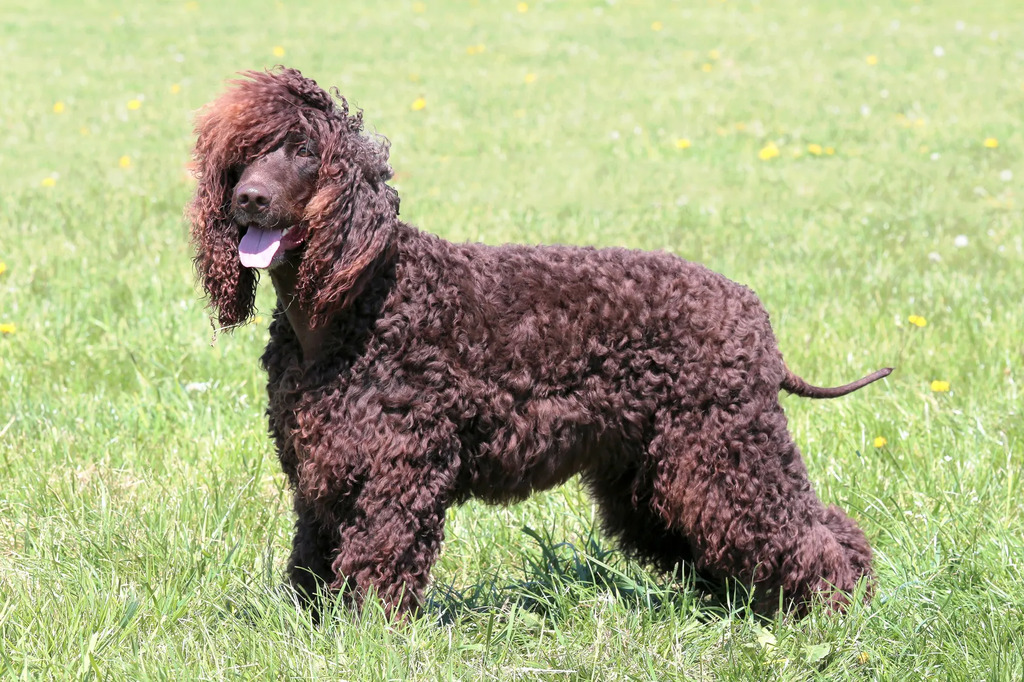
The Irish Water Spaniel is the largest of the spaniel breeds and among the oldest native Irish dogs. Its tight, curly coat and distinctive “rat tail” set it apart from other sporting breeds. The coat is water-resistant, allowing the dog to perform efficiently in lakes, rivers, and marshes.
Bred for retrieving game from water, the Irish Water Spaniel is intelligent and eager to please. It displays remarkable stamina and adaptability. Its training requires a firm yet kind approach, as the breed can be sensitive to harsh correction.
Known for a mix of independence and affection, the Irish Water Spaniel is devoted to its family. It thrives on mental stimulation and regular exercise. The breed’s curly coat requires careful grooming to prevent tangling, but it sheds very little, which many owners appreciate.
Though less common than other spaniels, this breed has maintained a loyal following among hunters and enthusiasts. Its distinctive appearance and spirited personality make it one of Ireland’s most fascinating canine exports.
9. Kerry Beagle
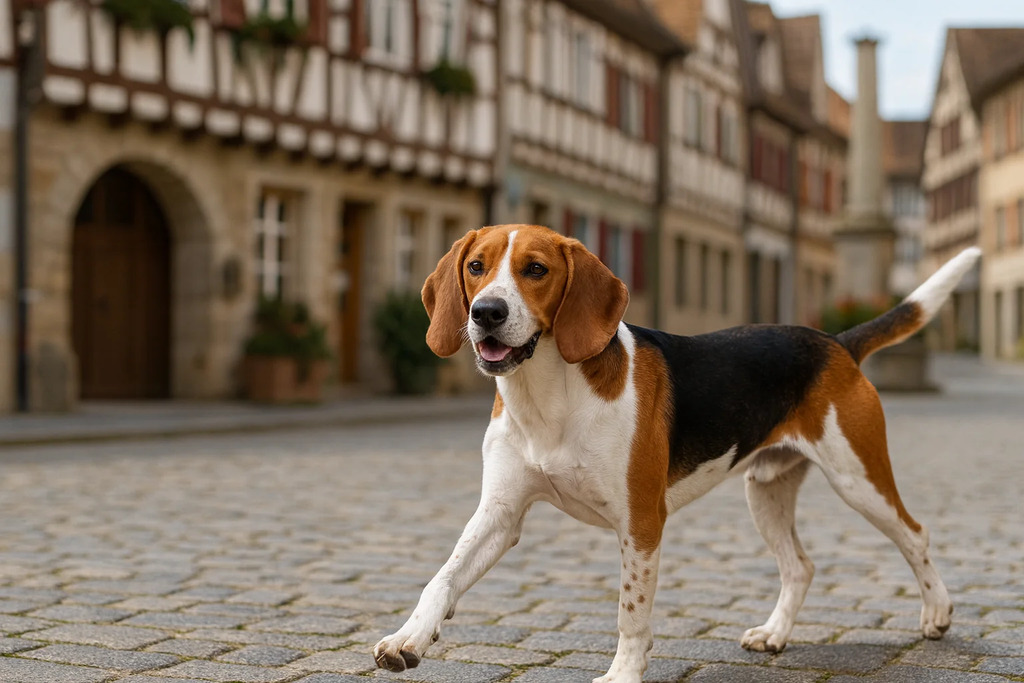
The Kerry Beagle is among Ireland’s oldest native breeds, with roots that trace back to medieval times. Despite its name, it is larger than the typical Beagle and bears closer resemblance to old hound types used for hunting deer and fox.
This breed was prized for its stamina and sharp scenting ability. Traditionally, Kerry Beagles ran in packs during hunts, demonstrating endurance across rugged terrain. Their athletic build and persistence made them dependable working dogs.
Temperamentally, they are even-tempered and loyal. They form strong bonds with their families and coexist well with other dogs. Their energy and keen sense of smell make them happiest in active environments.
Today, the Kerry Beagle remains rare but is valued by those preserving Ireland’s canine heritage. It stands as a link between ancient hunting traditions and modern sporting pursuits.
10. Irish Toy Collie (Unofficial/Rare)
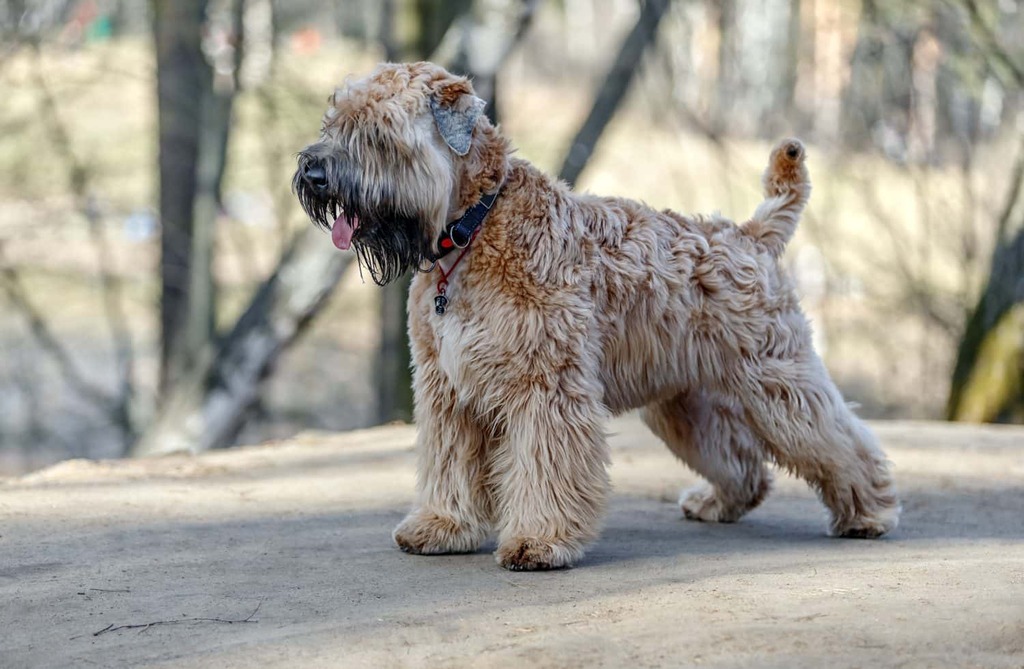
The Irish Toy Collie is not an officially recognized breed but appears in a few historical references and anecdotal records. Descriptions suggest it was a small herding dog or companion, possibly a miniature version of working collies found in Ireland and Scotland.
Reports mention dogs with intelligence, agility, and loyalty, making them suitable for small farms or as family companions. While no formal breeding lines or standards have survived, interest in the idea of a miniature Irish herding dog persists among historians and enthusiasts.
Though rare and unofficial, the Irish Toy Collie represents the diversity of Ireland’s canine history and the adaptability of its working dogs.
The Legacy of Irish Breeds
Irish dog breeds reflect the nation’s relationship with land, work, and companionship. Many were shaped by necessity to hunt, herd, or guard, and evolved into loyal companions that embody both strength and gentleness.
From the towering Irish Wolfhound to the spirited Irish Terrier and the graceful Irish Setter, each breed tells a story of survival, skill, and national pride. Their shared traits, intelligence, loyalty, endurance, and affection, illustrate Ireland’s long-standing commitment to purposeful breeding.
Modern enthusiasts continue to preserve these breeds through responsible breeding and education. Organizations across Ireland and abroad promote genetic health, proper care, and awareness of their historical significance.
These dogs are more than national symbols; they are living links to Ireland’s cultural heritage. Their continued presence across homes and fields worldwide keeps that heritage alive, celebrated, and cherished.
In Case You Missed It!



